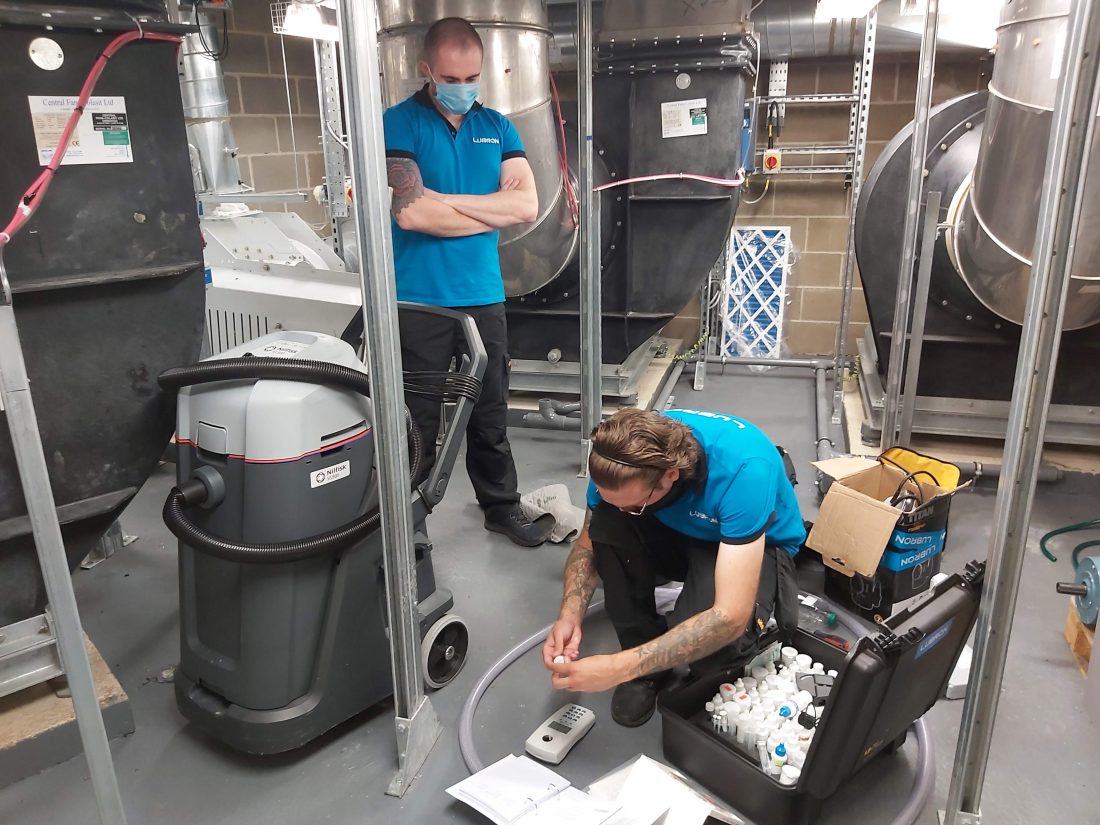WATER TANK CLEANING
At Lubron, we specialise in professional water tank cleaning, with our team using a variety of methods to meticulously remove sediments, impurities, and bacterial buildup from the tank’s interior surfaces. This helps maintain the quality of stored water, preventing health risks, while also ensuring efficient equipment operation and extending its lifespan.
The importance of water tank cleaning
Water tank cleaning is essential in residential, commercial, and industrial settings. Water tanks can accumulate sediment, debris, and potentially harmful bacteria over time. Without regular cleaning to remove these contaminants, the stored water can become unsafe, posing health risks to those who use it.
Consuming contaminated water can lead to gastrointestinal issues, infections, or waterborne diseases like cholera and typhoid. A clean water tank is also likely to operate more efficiently and have a longer lifespan since it reduces the chances of corrosion, blockages, or breakdowns caused by sediment buildup. At Lubron, we provide water tank cleaning services that help to safeguard health and ensure a reliable water supply.
Our water tank cleaning services
At Lubron, we’ve been performing commercial and domestic water tank cleaning for many years, with our fully trained team possessing two decades of experience between us. This ensures we have a vast amount of knowledge and expertise at hand. Importantly, our work is carried out in line with HSG274 . Our water tank cleaning services include:
- Cold Water Storage Tanks (CWST)
- Potable (Drinking Water) Tanks
- Mains Pipework (New & Existing)
- Process Equipment, such as wash systems and water features
- Cooling Tower Clean and Disinfections

At Lubron, we deploy various cutting-edge methods for hot and cold water tank cleaning and disinfection, ensuring a thorough and safe process. Our comprehensive range of techniques includes:
- Silver Hydrogen Peroxide
- Chlorine Dioxide
- Sodium Hypochlorite
- Thermal
Sodium hypochlorite, commonly known as chlorine, can eliminate bacteria, viruses, and algae from water tanks. A traditional yet highly effective disinfection method, it remains a staple in our water tank cleaning procedures. We also use stabilised hydrogen peroxide, which is increasingly considered to be a safer disinfection method. Silver hydrogen peroxide eliminates harmful bacteria, viruses, and contaminants without leaving residual chemicals, ensuring enhanced water safety.
Each method is carefully chosen based on the specific requirements of the water tank. At Lubron, we tailor our techniques to meet the unique needs of the water storage system, with our goal being to achieve exceptional cleanliness. You can rely on us to deliver a clean water tank that ensures your water remains pure, safe, and compliant with the highest industry standards.
Contact us
Whether you require commercial, industrial, or domestic water tank cleaning, we can assist. Call us on 01206 866444 to discuss your requirements with one of our experienced operatives. Alternatively, email us at sales@lubron.co.uk and we will get back to you as quickly as we can.
HSG274 part 2 Tank Cleaning Guide
FAQs
How much water am I allowed to store in a cold water storage tank (CWST)?
24 hours and only 12 hours in healthcare. Here at Lubron we can help with designing suitable tanks including all the installation. We can also upgrade existing tanks saving money over replacement.
How often do I have to clean my cold water storage tank?
An annual inspection of the cold water storage tank should be done to check its condition inside and outside, and the water within it. Figure 2.12 with HSG274 Part 2 demonstrates the condition of cold water storage tanks and when action should be taken.
Drinking water tanks require a higher level of control, these need be cleaned and disinfected annually (or more frequently if inspection deems necessary)
How often should I inspect my CWST (Cold Water Storage Tank)
An internal inspection for signs of possible contamination and debris should be carried out every 6 months for potable water and every 12 months for non-potable water.
Do I have to take lab samples for microbiological sampling?
Microbiological samples should be taken every 6 months for potable water, and only as required by a control scheme for non-potable water.
How do I repair a leaking cold water storage tank (CWST)
Depending on the size we recommend the tank is professionally painted – these often come with a 10 year leak warranty and work out cheaper than replacement
What is gel coat failure
Gel coat (glass reinforced plastic) failure resulting in local biological fouling (dark spots). These are almost impossible to remove therefore replacement or relining is recommended. Here at Lubron we offer a free consultancy visit where we can survey the tank and come back to you with suitable advice.
What temperature should my CWST (Cold Water Storage Tank) be stored at?
The tank along with all cold taps should be kept at below 20°C. At this temperature Legionella will not grow.
How often should a cooling tower be cleaned
The required frequency and scope of regular cleaning and disinfection operations should be determined by an assessment of the fouling potential. This should be based on inspection and the history of the water treatment control of microbial activity, scaling tendencies and other factors that may result in fouling of the particular system. Towers are typically cleaned every six months or on start up and shut down
To find out more about how our water tank cleaning and disinfection services can support your business, please get in contact today.









